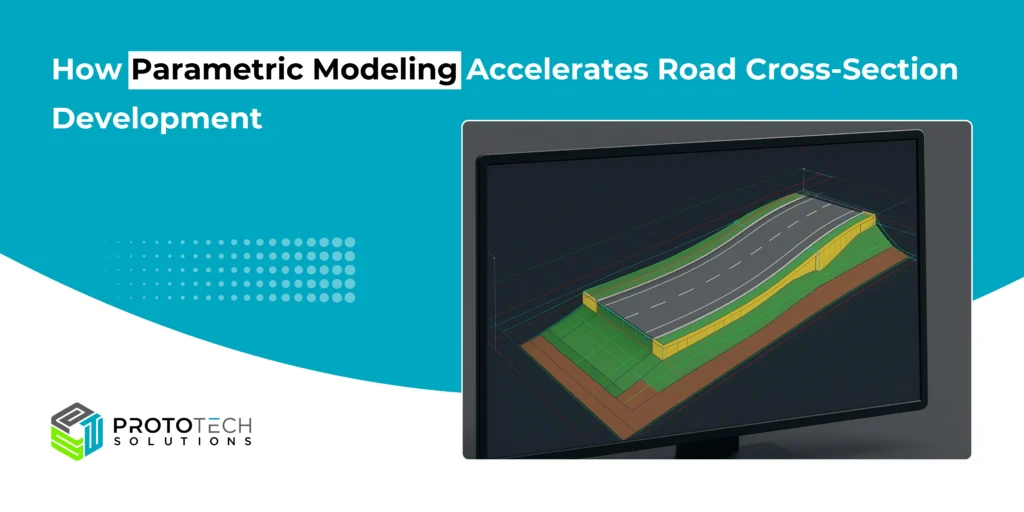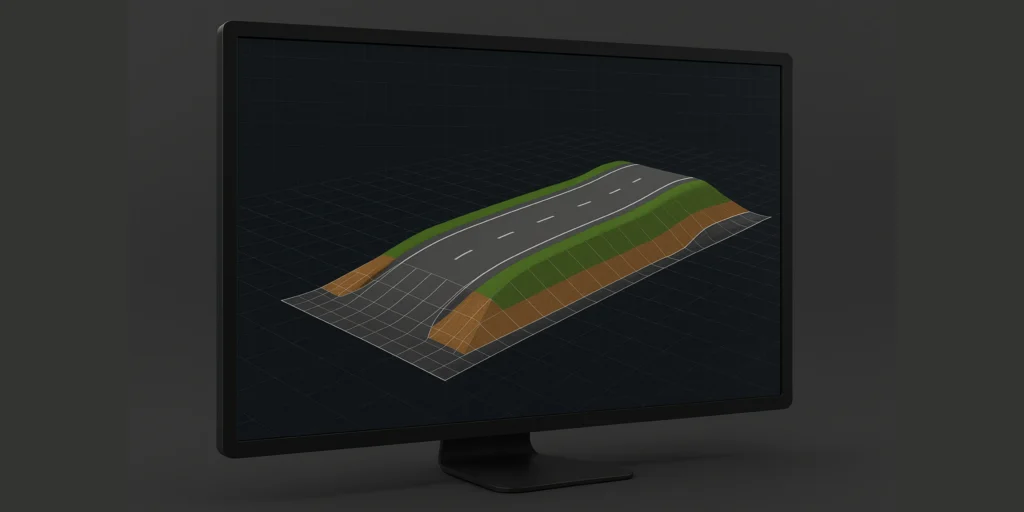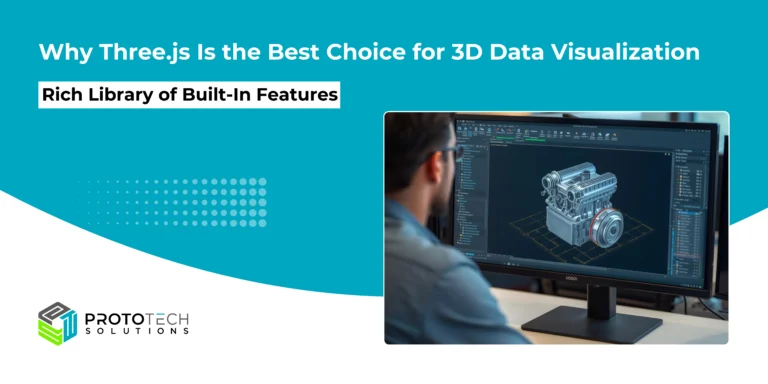How Parametric Modeling Accelerates Road Cross-Section Development

Introduction
Modern road infrastructure projects are becoming increasingly complex, requiring precise alignment, safety optimization, and consideration of sustainability. Traditional manual drafting or even conventional CAD-based methods often slow down design workflows, especially when engineers need to adapt to continuous changes in terrain conditions or project requirements. This is where Parametric Modeling is changing the game. By applying rule-based, adaptable geometries, civil engineers can automate and streamline road cross-section design with far greater speed and accuracy. Advanced digital tools and intelligent design software are enabling highway agencies and consultants to deliver infrastructure projects that are faster, cost-effective, and future-ready.
What is Parametric Modeling in Road Design?
3D parametric modeling is a computer-aided design (CAD) method that involves creating 3D models using parameters, relationships, and constraints. This technique allows designers and engineers to build and manipulate 3D objects while maintaining control over various design parameters.
Parametric modeling is a design approach in which relationships and rules are embedded within the model. Instead of creating static drawings, engineers define parameters such as slope, width, elevation, and materials. The model then adapts dynamically when changes are made.
In the context of road and highway engineering, this means roadway widths, lane configurations, shoulders, medians, and slopes can be adjusted dynamically while maintaining design integrity. Compared to conventional CAD-based workflows, which often require manual rework for grading changes or alignment shifts, parametric models bring adaptability and efficiency. This intelligent method helps engineers move away from static drawings toward flexible, data-driven roadway design.
Why Road Cross-Section Design Matters
The road cross-section design is one of the most critical elements in highway projects. It defines how the road interacts with its environment and ensures safety, functionality, and durability. Key aspects include:
- Highway cross-sections that balance traffic lanes, shoulders, medians, and side slopes.
- Proper drainage systems to prevent waterlogging and erosion.
- Accurate grading plans in road design that support stability, minimize excavation costs, and align with environmental standards.
Errors or inefficiencies in cross-section design can lead to cost overruns, safety hazards, and project delays. This is why adopting parametric modeling has become essential for modern infrastructure development.
Accelerating Development with Parametric Modeling

Traditional workflows often require engineers to redraw sections or revise grading every time alignment or design requirements change. With parametric roadway design software, adjustments become far more efficient.
- When slopes or elevations need refining, engineers can simply update parameters, and the cross-section updates instantly across the design.
- Iterations that previously took days of manual revisions can now be completed in hours.
- Grading modifications, slope stability checks, and cut-and-fill balances can be optimized more effectively with the use of parametric tools.
By automating repetitive tasks and linking multiple design elements, parametric modeling ensures consistency across large roadway projects. For example, when road widening is required mid-project, software-driven updates ensure that design rules are met without having to start from scratch. This efficiency dramatically accelerates project timelines while maintaining engineering accuracy
Integration with BIM and 3D Modeling
The synergy between parametric modeling, BIM for highway design, and 3D modeling for civil engineers has transformed the way infrastructure projects are executed.
- BIM integration ensures subgrade layers, utilities, and drainage components are accurately represented within one model, improving collaboration among multidisciplinary teams.
- 3D visualizations allow engineers, contractors, and stakeholders to clearly understand highway cross-sections, evaluate grading impacts, and detect possible clashes before construction.
- Parametric models linked with BIM platforms also support construction sequencing, asset management, and digital twin initiatives, making design data more valuable throughout the project lifecycle.
Together, these digital approaches bridge communication gaps between planning, design, and construction, ensuring data continuity and reducing costly rework.
Benefits of Parametric Road Cross-Section Development
Adopting parametric workflows in road engineering brings a wide range of benefits:
- Speed and Efficiency: Automating repetitive tasks accelerates design cycles.
- Improved Accuracy: Rules-based modeling minimizes human error and ensures consistency.
- Cost Savings: Reduced rework and optimized material usage lower overall project costs.
- Sustainability: Efficient grading plans in road design minimize earthwork, reduce waste, and support eco-friendly infrastructure.
- Better Collaboration: Integration with BIM and 3D visualization tools enhances coordination among project teams.
These benefits make parametric modeling a cornerstone of modern highway projects, ensuring faster delivery without compromising quality.
Read Related: The Ultimate Guide to Highway Design: From Planning to Drafting
Conclusion
Parametric modeling is transforming the way engineers approach road cross-section design by improving efficiency, accuracy, and adaptability. By automating grading revisions, enhancing collaboration with BIM, and enabling 3D visualizations for stakeholders, parametric tools streamline the delivery of highway cross-sections.
Outsourcing partners play a critical role in this transformation. Firms with expertise in parametric roadway design software can accelerate development cycles, ensure compliance with engineering standards, and deliver optimized grading plans in road design with minimal rework.
At ProtoTech Solutions, our team of seasoned domain specialists utilizes cutting-edge CAD tools and technologies to create highly accurate, efficient, and sustainable road cross-section designs custom-tailored to meet the specific requirements of your project.
Partnering with ProtoTech Solutions means collaborating with a trusted ally in the field of civil engineering. Our experts are dedicated to supporting your vision of smarter, future-ready infrastructure by offering in-depth analyses and innovative solutions. We pride ourselves on our commitment to quality, environmental sustainability, and adherence to industry standards.
Reach out to us today to explore how we can help you in realizing your infrastructure goals with precision and excellence. Whether you are embarking on a new project or looking to enhance an existing one, we are here to support you every step of the way.






